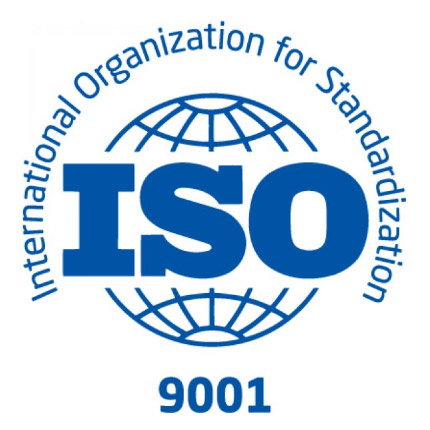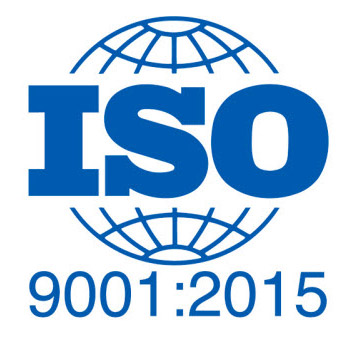Quality Consultation
ISO 9001
ISO 9001 is the international standard that specifies requirements for a quality management system (QMS). Organizations use the standard to demonstrate the ability to consistently provide products and services that meet customer and regulatory requirements. It is the most popular standard in the ISO 9001 and the only standard in the series to which organizations can certify.
ISO 9001 was first published in 1987 by the International Organization for Standardization (ISO), an international agency composed of the national standards bodies of more than 160 countries. The current version of ISO 9001 was released in September 2015 and is referred to as ISO 9001:2015.
The ISO 9000 family addresses various aspects of quality management and contains some of ISO's best known standards. The standards provide guidance and tools for companies and organizations who want to ensure that their products and services consistently meet customer's requirements, and that quality is consistently improved.

Standards in the ISO 9000 family include:
- ISO 9001:2015 - sets out the requirements of a quality management system
- ISO 9000:2015 - covers the basic concepts and language
- ISO 9004:2009 - focuses on how to make a quality management system more efficient and effective
- ISO 19011:2011 - sets out guidance on internal and external audits of quality management systems.
Who should use the ISO 9001 - quality management systems?
ISO 9001 applies to any organization, regardless of size or industry. More than one million organizations from more than 160 countries have applied the ISO 9001 standard requirements to their quality management systems.
Benefits of ISO 9001?
ISO 9001 helps organizations ensure their customers consistently receive high quality products and services, which in turn brings many benefits, including satisfied customers, management, and employees.
The benefits of ISO 9001 cannot be overstated; companies large and small have used this standard to great effect, discovering and securing tremendous cost and efficiency savings. Here are just a few of these benefits:
- Improve your image and credibility - When customer see that you are certified by a recognized certification body, they will understand that you have implemented a system that is focused on meeting customer requirements and improvement. This improves their trust that you will deliver what you have promised.
- Improve customer satisfaction - One of the key principles of the ISO 9001 QMS is the focus on improving customer satisfaction by identifying and meeting customer requirements and needs. By improving satisfaction, you improve repeat customer business.
- Fully integrated processes - By using the process approach of ISO 9001, you not only look at the individual processes in your organization, but also at the interactions of those processes. By doing this, you can more easily find areas for improvement and resource savings within your organization.
- Use evidence-based decision making - Ensuring that you are making decisions based on good evidence is a key to the success of an ISO 9001 QMS. By ensuring that your decisions are based on good evidence, you can better target resources to the best effect to correct problems and improve your organizational efficiency and effectiveness.
- Create a culture of continual improvement - With continual improvement as the main output of the QMS, you can attain ever-increasing gains in savings of time, money and other resources. By making this the culture of your company, you can focus your workforce on improving the processes they are directly responsible for.
- Engage your people - Who better than the people working within a process to help find the best solutions for improving that process? By focusing your workforce on not only managing, but also improving the processes, they will be more engaged in the outcome of the organization.

ISO 9001:2008
ISO 9001:2008 is the title of a document (Standard) that outlines the requirements an organization must maintain in their quality system for ISO 9001:2008 certification. There are several different documents in the ISO 9000 family of standards, but ISO 9001-2008 is the only ISO standard that requires certification. The "2008" references the year of latest revision. It was previously called ISO 9001:2000, which is now obsolete (as are ISO 9002 and ISO 9003) and replaced by ISO 9001:2008 in the year 2008.
ISO 9001:2008 does NOT define the actual quality of your product or service. The standard helps you achieve consistent results and continually improve the process. Thus, if you can make a good product most of the time, this helps you make it all of the time. It's just good business practices
ISO 9001:2008 is based on the plan-do-check-act methodology and provides a process-oriented approach to documenting and reviewing the structure, responsibilities, and procedures required to achieve effective quality management in an organization. Specific sections of the standard contain information on topics such as:
- Requirements for a quality management system, including documentation of a quality manual, document control, and determining process interactions
- Responsibilities of management
- Management of resources, including human resources and an organization's work environment
- Product realization, including the steps from design to delivery
- Measurement, analysis, and improvement of the QMS through activities like internal audits and corrective and preventive action

ISO 9001:2015
ISO 9001:2015 sets out the criteria for a quality management system and is the only standard in the family that can be certified to (although this is not a requirement). It can be used by any organization, large or small, regardless of its field of activity.
This standard is based on a number of quality management principles including a strong customer focus, the motivation and implication of top management, the process approach and continual improvement. Using ISO 9001:2015 helps ensure that customers get consistent, good quality products and services, which in turn brings many business benefits.
Twenty-five years after its inception ISO 9001 has undergone a revision released in September of 2015. To date, more than 1.2 million organizations globally are certified to the ISO 9001 standard.
The standard has been written using a new high-level structure found in all new management systems standards allowing for easy integration with other standards within an organization's management system.
The revised standard:
- Remains generic, and relevant to all sizes and types of organization operating in any sector
- Maintains the current focus on effective process management to produce desired outcomes
- Takes account of changes in quality management systems practices and technology since the last major revision in 2000
- Reflects changes in the increasingly complex, demanding and dynamic environments in which organizations operate
- Applies Annex SL of the ISO Directives to enhance compatibility and alignment with other ISO management system standards
- Facilitates effective organizational implementation and effective conformity assessment by first, second and third parties
- Uses simplified language and writing styles to aid understanding and consistent interpretations of its requirements
APLUS is providing a complete and full assessment to its customers to apply and implement ISO 9001 by analyzing the current status and identify the best implementation process that should be followed to achieve the best results and have an accreditation from the first time.
APLUS Quality team are so professional due to their extended practical and theoretical knowledge and field expertize in a diversified industries.
Transition from ISO 9001:2008 to ISO 9001:2015
ISO 9001:2015 was published in September 2015. All those currently certified to ISO 9001:2008 will have three years from the release to update to ISO 9001:2015.
Changes introduced in the 2015 revision are intended to ensure that ISO 9001 continues to adapt to the changing environments in which organizations operate. Some of the key updates in ISO 9001:2015 include the introduction of new terminology, restructuring some of the information, an emphasis on risk-based thinking to enhance the application of the process approach, improved applicability for services, and increased leadership requirements.

APLUS will support your organization in transition process by providing a full and continuous support till accreditation.
ISO 9001:2008 & ISO 9001:2015 Training and Certification
Professionals responsible for developing, implementing, auditing, and managing an ISO quality management system or quality professionals interested in updating their documented ISO 9001-based QMS can take ISO 9000 training courses, which include courses focused on ISO 9001 and quality management systems. Additionally, organizations looking to improve employee performance and employees looking to continually improve will also find ISO 9000 training relevant.
Training in the concepts of ISO 9001 is available, and there are a range of course options for individuals to choose from. Only the first of these can lead to certification for the individual to be able to audit for a certification body, but the others are very useful for those who will be using these skills within their own company. APLUSs offers below trainings:
- ISO 9001 Lead Auditor Course - This is a four- to five-day training course focused on understanding the ISO 9001 QMS standard and being able to use it for auditing management systems against these requirements. The course includes a test at the end to verify knowledge and competence, and it is only with an accredited course that an individual can become approved to audit for a certification body.
- ISO 9001 Internal Auditor Course - This is commonly a two- or three-day course that is based on the lead auditor course above, but does not include the test for competence, so this is most useful for someone beginning to do internal audits within a company.
- ISO 9001 Awareness and Implementation Course - Several courses are offered that provide knowledge of ISO 9001 and how to implement it. These can be one- or two-day courses, and can even include online e-learning sessions as a method of teaching the material. These courses are good for those who need an overview on the ISO 9001 standard, or those who will be involved in the implementation within a company, and many are more economical than investing in the lead auditor course for those involved at this level.
ISO 9001 Gap Analysis
An assessment that compares a current quality system to what ISO 9001 requires, and identifies the gaps between what's there already and what's not.
Gap Analysis results in an engagement plan that identifies the gaps between the baseline and the target goals, the specific action steps and the resources required to achieve the project objectives.
The Standard has specific requirements that must be met, which are spelled out in its various clauses. If your current system doesn't meet any of the applicable requirements, there is a gap that you must fill before you can get ISO 9001 certification.
Why do a gap analysis?
To find your starting point and estimate the scope of work required.
You see, the most common questions people ask about getting ISO 9001 are:
- How long will it take?
- How hard is it?
- What's involved?
- How much will it cost?
The problem: every business or organization is different. Different sizes, different people, different fields. So there isn't any standard answer to those questions.
You can't really answer these questions with any confidence until you know your baseline or current position. Once you have that, you can plan what is needed for you to reach ISO 9001 status, because you will then have a reasonably accurate idea of the tasks and size of the project and thus the resources and time requirements.
This is where the Gap Analysis comes in. It tells you where you are now versus where you have to be to reach certification (if that's your goal). You find out exactly where your gaps are, and what has to be done to fill them, and get ISO 9001.
Your QMS scope applies to what product lines, ISO 9000 clauses, and facilities that you are planning on registering to ISO 9001.
To define the scope within the Gap Analysis we look at what processes need to be included and described within the ISO QMS. The output is a draft process map. Next we examine each clause of the ISO 9000 standard.





